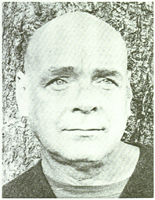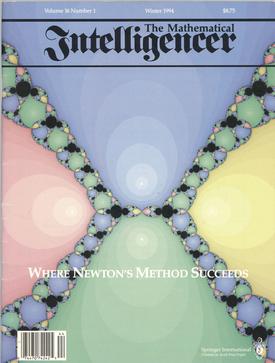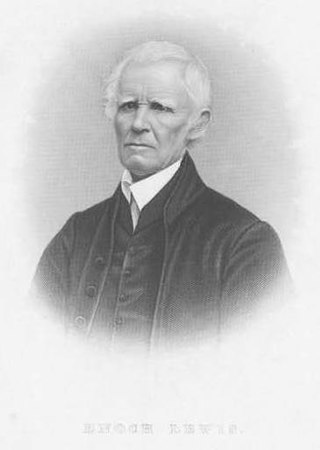The Annals of Mathematics is a mathematical journal published every two months by Princeton University and the Institute for Advanced Study.
The Analyst is a book by George Berkeley. It was first published in 1734, first by J. Tonson (London), then by S. Fuller (Dublin). The "infidel mathematician" is believed to have been Edmond Halley, though others have speculated Sir Isaac Newton was intended.
The American Statistical Association (ASA) is the main professional organization for statisticians and related professionals in the United States. It was founded in Boston, Massachusetts on November 27, 1839, and is the second-oldest continuously operating professional society in the U.S. behind the Massachusetts Medical Society. ASA services statisticians, quantitative scientists, and users of statistics across many academic areas and applications. The association publishes a variety of journals and sponsors several international conferences every year.
The year 1808 in science and technology involved some significant events, listed below.

Robert Adrain was an Irish political exile who won renown as a mathematician in the United States. He left Ireland after leading republican insurgents in the Rebellion of 1798, and settled in New Jersey and Pennsylvania. With Nathaniel Bowditch, he shares the distinction of being the first scholar to publish original mathematical research in America. This included his formulation of the method of least squares while working on a surveying problem for which he is chiefly remembered. His fields of applied mathematical interest included physics, astronomy and geodesy. Many of his mathematical investigations focussed on the shape of the Earth.

The Canadian Mathematical Society is an association of professional mathematicians dedicated to the interests of mathematical research, outreach, scholarship and education in Canada. It serves the national community through the publication of academic journals, community bulletins, and the administration of mathematical competitions.

Compute!, often stylized as COMPUTE!, was an American home computer magazine that was published from 1979 to 1994. Its origins can be traced to 1978 in Len Lindsay's PET Gazette, one of the first magazines for the Commodore PET computer. In its 1980s heyday, Compute! covered all major platforms, and several single-platform spinoffs of the magazine were launched. The most successful of these was Compute!'s Gazette, which catered to VIC-20 and Commodore 64 computer users.
Mathematical Reviews is a journal published by the American Mathematical Society (AMS) that contains brief synopses, and in some cases evaluations, of many articles in mathematics, statistics, and theoretical computer science. The AMS also publishes an associated online bibliographic database called MathSciNet, which contains an electronic version of Mathematical Reviews.

Crockett Johnson was the pen name of the American cartoonist and children's book illustrator David Johnson Leisk. He is best known for the comic strip Barnaby (1942–1952) and the Harold series of books, beginning with Harold and the Purple Crayon.
zbMATHOpen, formerly Zentralblatt MATH, is a major reviewing service providing reviews and abstracts for articles in pure and applied mathematics, produced by the Berlin office of FIZ Karlsruhe – Leibniz Institute for Information Infrastructure GmbH. Editors are the European Mathematical Society, FIZ Karlsruhe, and the Heidelberg Academy of Sciences. zbMATH is distributed by Springer Science+Business Media. It uses the Mathematics Subject Classification codes for organising reviews by topic.

The Mathematical Intelligencer is a mathematical journal published by Springer Science+Business Media that aims at a conversational and scholarly tone, rather than the technical and specialist tone more common among academic journals. Volumes are released quarterly with a subset of open access articles. Some articles have been cross-published in the Scientific American. Karen Parshall and Sergei Tabachnikov are currently the co-editors-in-chief.
Comptes rendus de l'Académie des Sciences, or simply Comptes rendus, is a French scientific journal published since 1835. It is the proceedings of the French Academy of Sciences. It is currently split into seven sections, published on behalf of the Academy until 2020 by Elsevier: Mathématique, Mécanique, Physique, Géoscience, Palévol, Chimie, and Biologies. As of 2020, the Comptes Rendus journals are published by the Academy with a diamond open access model.
The Mathematical Correspondent was the first American "specialized scientific journal" and the first American mathematics journal, established in 1804, under the editorial guidance of George Baron. The journal published an essay by Robert Adrian which was the first to introduce Diophantine analysis in the United States. In 1807, Adrian, a main contributor to the journal, became editor for one year.

Philosophical Transactions of the Royal Society A: Mathematical, Physical and Engineering Sciences is a fortnightly peer-reviewed scientific journal published by the Royal Society. It publishes original research and review content in a wide range of physical scientific disciplines. Articles can be accessed online a few months prior to the printed journal. All articles become freely accessible two years after their publication date. The current editor-in-chief is John Dainton.

The Mathematical Diary was an early American mathematical journal and mathematics magazine, published between 1825 and 1833.

Experimental Mathematics is a quarterly scientific journal of mathematics published by A K Peters, Ltd. until 2010, now by Taylor & Francis. The journal publishes papers in experimental mathematics, broadly construed. The journal's mission statement describes its scope as follows: "Experimental Mathematics publishes original papers featuring formal results inspired by experimentation, conjectures suggested by experiments, and data supporting significant hypotheses." Its editor-in-chief is Alexander Kasprzyk.

Advances in Mathematics is a peer-reviewed scientific journal covering research on pure mathematics. It was established in 1961 by Gian-Carlo Rota. The journal publishes 18 issues each year, in three volumes.

Journal of the European Mathematical Society is a monthly peer-reviewed mathematical journal. Founded in 1999, the journal publishes articles on all areas of pure and applied mathematics.

Enoch Lewis was a mathematician. He early exhibited a talent for mathematics, at the age of fourteen was usher in a country school, and at fifteen became principal. In the autumn of 1792 he removed to Philadelphia, studied mathematics, teaching half of each day to earn his support, and in 1795 was engaged as a surveyor in laying out towns in western Pennsylvania under the direction of Andrew Ellicott.










